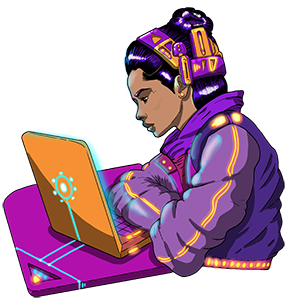When it comes to developing a video game with global appeal, it’s not just about the code and graphics. Successful localization and cultural adaptation are pivotal factors that must be considered from the very outset. However, if you’re not a localization expert, figuring out where to begin can be challenging.
We’ll guide you through the essential aspects of video game localization and what you need to consider for a successful worldwide release strategy.
Preparation Phase
Before you dive into the intricacies of localization, you must lay a solid foundation during the preparation phase:
- Globalization strategy: This is your compass in the world of localization. It’s essential to identify your target markets, understand cultural preferences, analyze gaming habits, spot emerging trends, and gauge the competition within those markets.
- Localization strategy: Armed with market insights, you can now define a localization strategy. Determine the level of localization required, including aspects like subtitles, dubbing, culturalization, and transcreation needs. Additionally, decide at which stage the localization team should join the development process.
- Budget and timeline: Setting a budget and establishing a timeline are crucial steps. Localization efforts must be well-funded and time-bound. Choosing a reliable vendor is equally important, as they’ll be your partners in this endeavor.
Game Design and Content Creation
As you move into the game development phase, it’s essential to weave localization considerations into the very fabric of your game:

- Internationalization: From the very inception of your game, think internationally. Code your game in a way that makes multilingual support a seamless process, allowing for text changes without a hitch.
- Character sets and languages: Ensure that your in-game text can gracefully accommodate different character sets and languages, avoiding technical hurdles down the road.
- Interface adaptation: A crucial aspect is ensuring that your game’s interface can be easily adapted to fit the targeted language and cultural preferences. This includes considerations like reading order and layout adjustments.
- Cultural sensitivity: Review your game’s content to pinpoint elements that may require cultural adjustments. When in doubt, seek professional advice.
Localization Process
Now that you’ve set the stage for localization, it’s time to delve into the actual process:
- Quality is key: Localization is what transforms your game’s content into something relevant to your target audience. Quality should be your primary concern. Remember, poor localization can undermine the gaming experience more than not offering a localized version at all.
- Professional translators: The heart of localization lies in professional translators who are not only native in the target language but also well-versed in gaming. They should be capable of translating all in-game text, including dialogues, menus, tutorials, and subtitles, in a way that resonates with the target players.

Cultural and Linguistic Quality Assurance
With the localization process underway, you must ensure that your game’s cultural and linguistic elements are top-notch.
- Linguistic and functional testing: Rigorous linguistic and functional testing is crucial to identify and rectify language-related bugs within your game.
- Adaptations: During the QA phase, you may discover the need for further cultural adaptations. This could involve modifying gameplay elements, symbols, references to religious beliefs, or portrayals to better resonate with the target audience.
- Regional regulations: Be vigilant about regional regulations and age ratings that may apply to your game. Different countries have varying requirements and restrictions.
Other Game Localization Services
Even after your game is localized, the journey continues with various other localization tasks.
- Marketing materials: Don’t forget to localize your marketing and promotional materials. This includes your website, social media content, product page descriptions from game stores, ads, editorials, trailers, announcements, and streaming content, ensuring you can effectively engage with a broader audience.
- Updates and patches: Consider the link between localization and the Games as a Service (GaaS) model. Ensure that updates and patches are localized promptly to maintain a consistent user experience.
- Customer support: Providing customer support in the offered target language is crucial to addressing player inquiries and concerns effectively.
- Feedback and analysis: Establish a feedback loop between developers and localizers for future updates and new game releases. Analyze player feedback and sales data to inform future localization efforts effectively.

The Takeaway
In the dynamic world of video game development, reaching a global audience hinges on careful localization and cultural adaptation. Crafting these elements thoughtfully can elevate your game to a whole new level of success. Keep in mind the vital role of a trusted localization partner, both during the production process and after. With strategic planning and unwavering commitment to quality, your game can transcend language barriers and connect with players from diverse cultures around the world.



